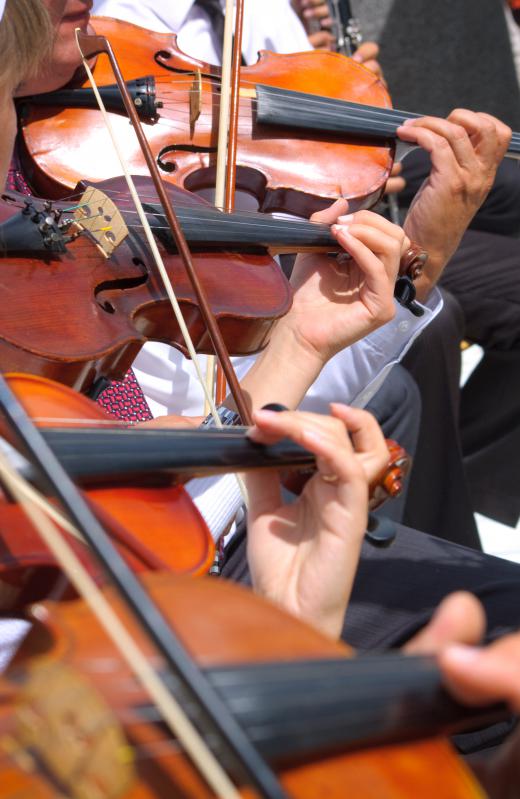At MusicalExpert, we're committed to delivering accurate, trustworthy information. Our expert-authored content is rigorously fact-checked and sourced from credible authorities. Discover how we uphold the highest standards in providing you with reliable knowledge.
What Is a Chamber Orchestra?
A chamber orchestra is an orchestra of usually between twelve and forty musicians who play mostly classical music. Although there may be several of the same instrument in a chamber orchestra, each plays a different part of the composition. A chamber orchestra may be differentiated from a symphony orchestra or a philharmonic orchestra by the number of members. Larger orchestras may have as many as 100 members with more than one instrumentalist playing the same part. Chamber orchestras typically operate without a conductor, requiring a different set of skills and dynamic relationship between the musicians.
Seventeenth century European royals and upper class employed musicians to entertain guests in a “chamber,” which led to the term “chamber music,” which was meant to be played by a small group of musicians for a smaller audience. Chamber orchestras may have evolved from French chansons, which consisted of a group of four singers and a lute. This arrangement gradually changed into different types of stringed instruments playing together with or without a voice. By the 18th century, composer Joseph Haydn was writing music to be played by string quartets. In subsequent years, other composers, like Beethoven, Mozart, and Schubert were composing music for small groups of stringed instruments with the addition of a piano.

By the twentieth century, music was composed for larger orchestras consisting of different groupings of stringed instruments, woodwinds, percussion instruments, and sometimes brass instruments. As symphony orchestras grew larger, chamber orchestras played many of the pieces unsuitable for larger orchestras. Many of Bach, Brahms, and Dvorak’s pieces are composed for smaller groups of musicians. Without a chamber orchestra to play them, music-lovers might never have the opportunity to hear these lesser known pieces.

A chamber orchestra also differs from a symphony orchestra in the way it is led. Symphony orchestras have a conductor who leads the group with hand gestures and body language. Chamber orchestras lack a conductor, instead relying musician hierarchy to form a more equalitarian group.
This forces musicians to work together, giving them both more freedom of expression as a musician, yet depending upon the other members of the chamber orchestra for the music to synthesize. Due to the greater intimacy of the arrangement, chamber orchestra members must tolerate and work well with different personalities, some of which might be quite strong. This makes chamber orchestra member chemistry more important than in a larger orchestra and accounts for a tendency toward musician high-turnover.
AS FEATURED ON:
AS FEATURED ON:













Discuss this Article
Post your comments